How much did the May frost hurt Finger Lakes wineries?
The year 2023 dawned an exciting one for the husband-and-wife team of Sebastian and Colleen Hardy, owners of Living Roots Wine & Co., which produces wines in both Colleen Hardy's native New York and Sebastian Hardy's native Australia.
The couple was gearing up to open a new production facility and tasting room on the southeast side of Keuka Lake. It was also going to be the first significant crop from their family's vinifera vines planted at Shale Creek Vineyard, which had been given extra care with an eye to producing a premium estate wine.
Across Keuka Lake, Mel Goldman shared their optimism. "This was the year," he said.
His winery, Keuka Lake Vineyards, had been finding its way into the Finger Lakes spotlight over the years. It has been written up in the national press and won some big awards in 2022. He was happy with the team he had assembled for the season and after a mild winter, the vines, which had budded early due to 80-degree days in April, were in looking beautiful.
But in the early morning hours of May 18, the situation for the Hardys, Goldman and others in the wine region changed dramatically. A frost settled into the Finger Lakes and damaged the tender green shoots and buds on the vines. Some growers guessed they'd use as much as 80% of their harvest.
Months later, the grape harvest has begun and the industry is finally getting a full look at the effects of the frost.
"It’s better than we thought — not great, but it’s better than we were afraid it looked like," said Hans Walter-Peterson, viticulture extension specialist for the Cornell Cooperative Extension. His best guess that the harvest will be roughly 30% less than normal.
But some growers fared much better than others.
'Better than we could have hoped for'
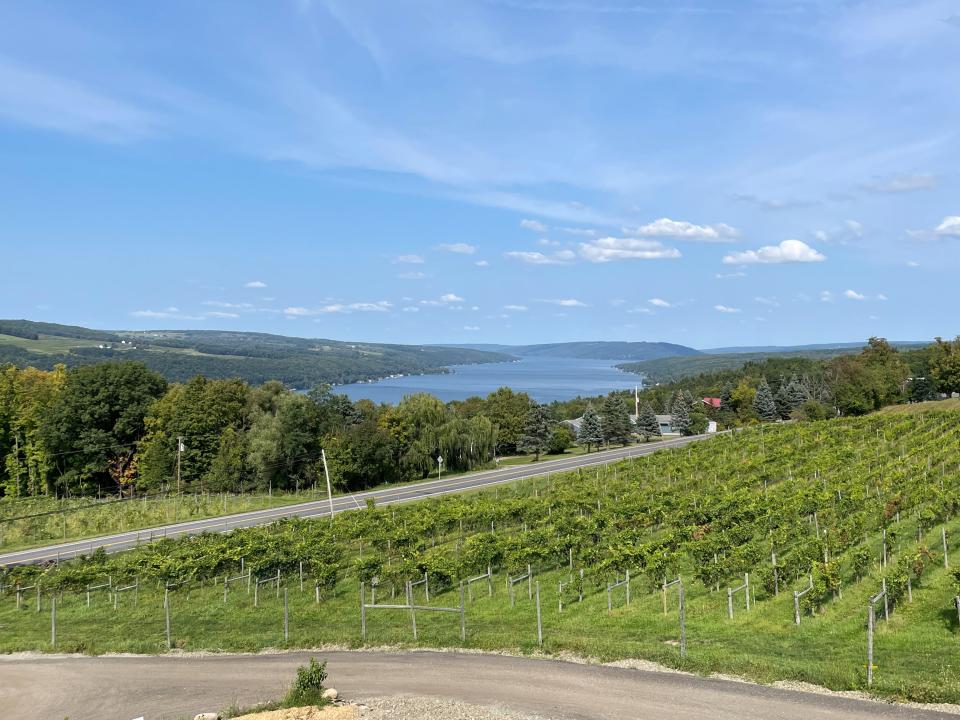
Shale Creek Vineyard, which surrounds the new Living Roots production facility and tasting room, is owned by Colleen Hardy's parents, Mike and Meredith Hurley.
When the frost hit in May, its vines were mostly shriveled. They anticipated losing 70% of their crop, and some newly planted vines were killed. Now the outlook is closer to a 30% loss.
"Some are worse than others, but generally speaking the vineyard bounced back better than we could have hoped for," Colleen Hardy said. "Generally, it’s looking to be a good harvest, all things considered.”
"It really depended on the variety," Sebastian Hardy said. The American hybrid Elvira, which will be used in sparkling wine, fared the best. Cabernet franc and pinot meunier, which were planted further down the hill, were hit hardest.
As in the past, the winery is sourcing some of its grapes from other growers, but availability varies. They've been able to get pinot noir and cabernet franc from one grower in higher quantities. But a grower that would normally provide them with 7 to 8 tons of Marquette, which they use in their dry rosé, harvested just 3/4 of a ton. And pinot gris and gewurtztraminer have been especially hard to come by.
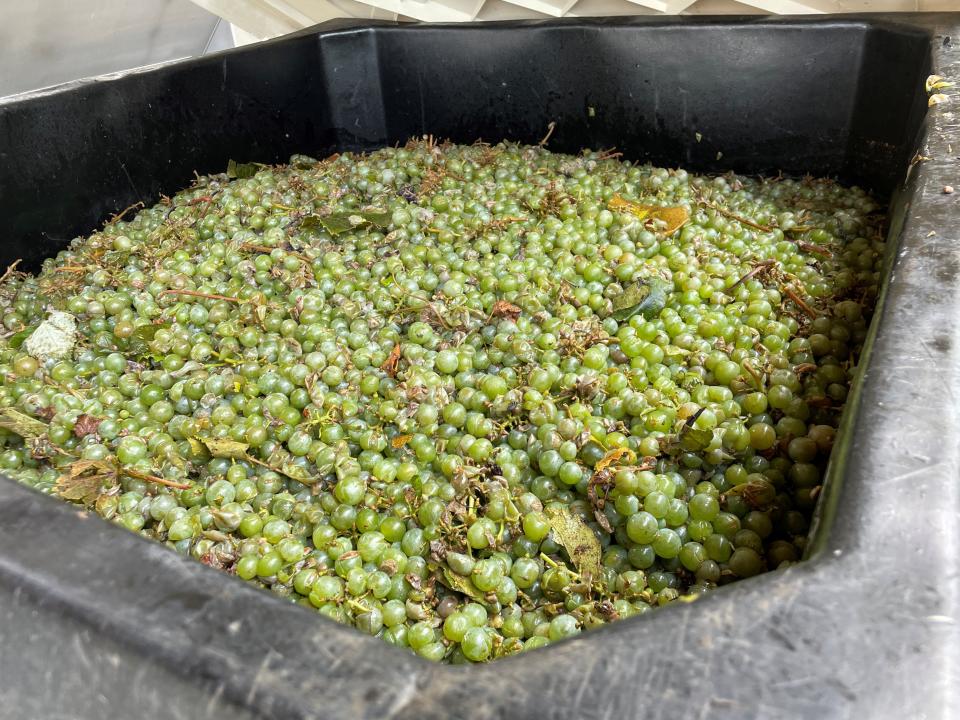
Gewurtztraminer was the hardest hit in the region, said Peterson of Cornell. The grape, which is not well known beyond wine aficionados but produces some outstanding wines in the Finger Lakes, will be down more than 40%. But New York State gives small wineries that operate under farm winery licenses some leeway in this case. Whereas they usually have to produce their wines only from New York State grapes, they will have the option of going outside the state for a percentage of their gewurtztraminer grapes, Peterson said.
Sebastian and Colleen Hardy reflected that frost is just one of many challenges they've faced, both in Australia and the Finger Lakes. "It’s just agriculture," Sebastian Hardy said. "The weather is getting more variable. It’s always challenging.”
Puzzling over effects of frost
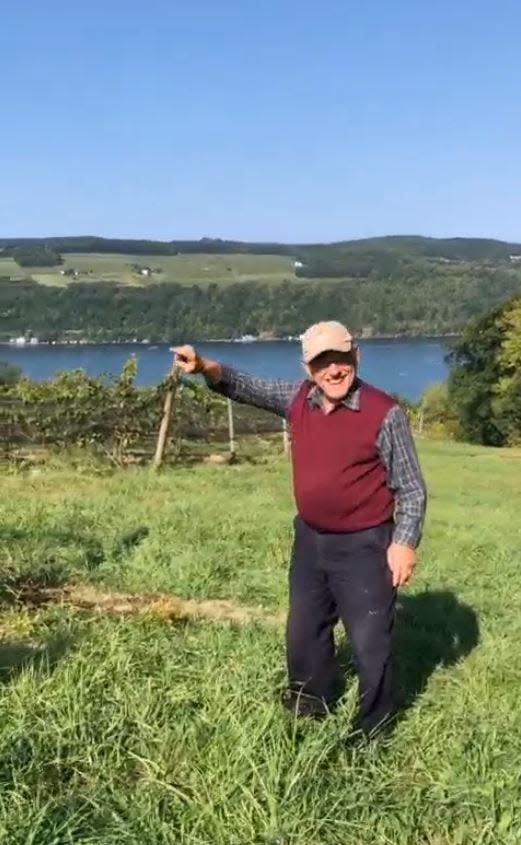
As Mel Goldman walks through the vineyards he farms on both sides of Keuka Lake, he is baffled at the disparate effects of the frost, even in blocks of grapes that are a 9-iron away from each other.
The riesling grapes at the steep Falling Man vineyard, beneath his tasting room on the west side of the lake, are beautiful. The damage from the frost was just enough to save him the annual task of shoot thinning. He estimates he'll have 75 percent of his usual riesling crop. Cabernet franc, on the other hand, looks great in one block, but another produced almost nothing.
Hardest hit was seyval blanc, a hybrid wine grape variety used in the winery's easy drinking off-dry wine and in a pet-nat. The red wine grape Leon Millot also was hard hit, which was a blow, because the winery's 2020 Leon Millot won best red wine in New York at the New York Wine Classic in 2022.
Goldman said he'll be lucky if he gets half of his usual yield, which will cut into his profitability, something that's hard to achieve at his winery even on a normal year. “Doing this and making a profit is really tough," Goldman said.
'All part of farming'
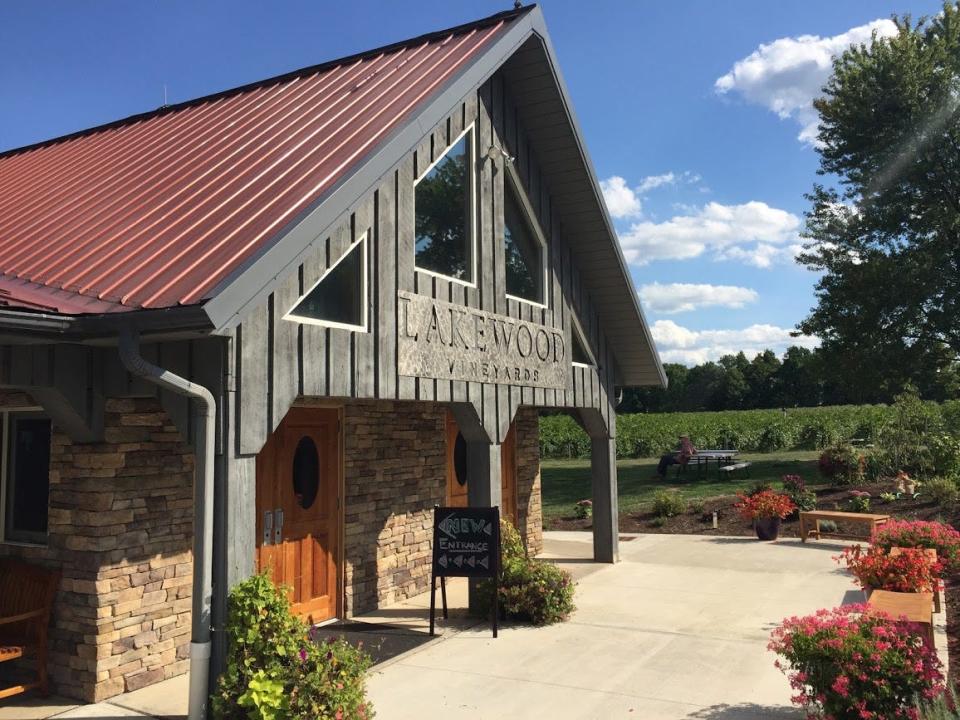
Over on Seneca Lake, Dave Stamp is among the third generation at Lakewood Vineyards on the southwestern side of Seneca Lake. As vineyard manager, he oversees the care and harvest of 130 acres of grapes.
Initially devastated by the effects of the May frost, his initial guess was that the winery's harvest would be cut by half. Now it appears that the harvest will be closer to a third less than normal. "[The grapes] are responding a little better than we hoped," he said.
Some of the grapes that got hurt at Lakewood are French-American hybrid grape varieties. Leon Millot, essential to the winery's easy drinking Long Stem Red, was hard hit, but he thinks the winery will be able to find other sources for the popular blend.
Many of the vinifera grapes don't seem to have been as damaged. “A lot of those are going to be OK," he said
"It’s all part of farming," he said. "We’ll get through this. We expected it at some point.”
Less damage further north
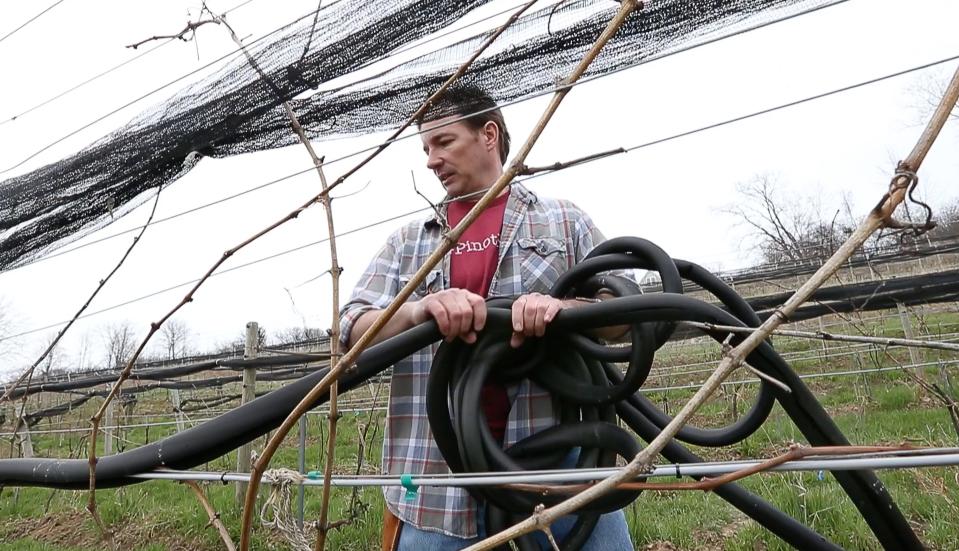
At the northern end of Cayuga Lake, where the temperature dipped below freezing for minutes instead of hours, the picture is far different.
At Heart & Hands Wine Company in Union Springs, a few row of chardonnay grapes in a low lying area close to the road had the most damage. Co-owner Tom Higgins guesses the vine's secondary clusters won't be ripe enough to harvest, so they'll likely wind a snack for birds, foxes and raccoons.
Some of the winery's pinot noir vines had looser clusters than usual, which isn't a problem, while others are pink-ish instead of the grape's usual rich purple. "Our team knows how to pick around that stuff," Higgins said.
In the end, Higgins lost just 2 percent of its crop to frost damage, which is a larger harvest than last year. "The tanks will likely be full this year," he said. "We’re excited about the vintage. The fruit looks clean. I think we’ve done a pretty good job of dealing with the conditions Mother Nature gave us this year.”
What's next?
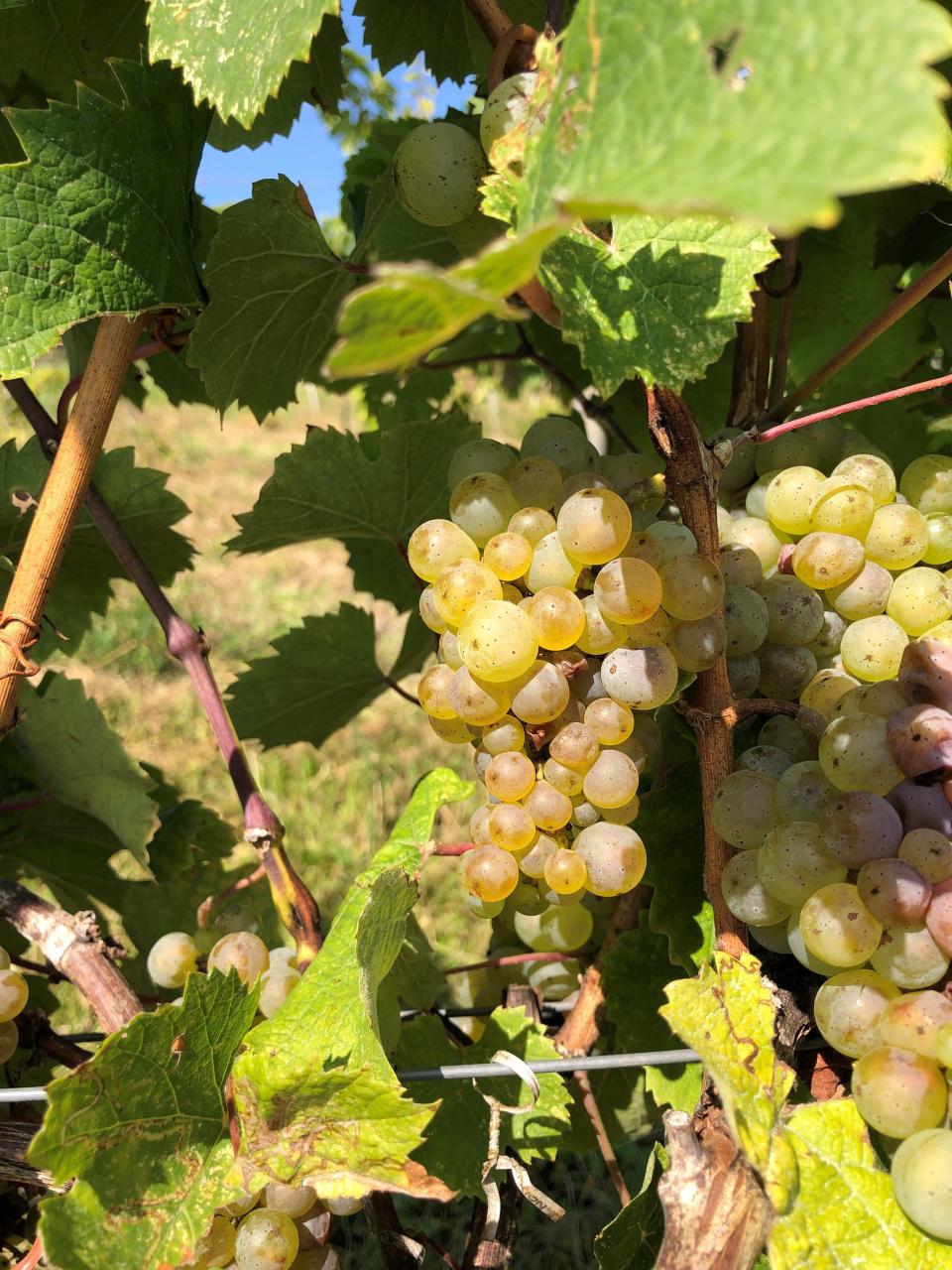
Many growers have crop insurance, which will reimburse them for some of their losses.
In addition, a federal agricultural disaster declaration for 31 counties, spanning from Western New York to the Hudson Valley, offers the growers access to low-interest emergency loans. But growers are reluctant to add debt if they don't have to. "We already have a lot of loans," said Colleen Hardy of Living Roots.
Shale Creek Vineyard is taking advantage of a USDA program that will help with the cost of replanting some of the vines that were killed. “That one feels a lot more beneficial," Hardy said.
Fortunately, Mother Nature has been relatively kind since May. While the quantities of the harvest will be down, the quality looks promising.
"It’s feeling good so far," said Peterson of Cornell. "I’ve been encouraged to see how clean the fruit looks.."
But the next few weeks will be critical, and the hope is for a long stretch of dry weather. "If we get a whole lot of rain, that can change things," Peterson said.
Tracy Schuhmacher, food and drink reporter, holds a level 3 certification in wines from The Wine & Spirit Education Trust (WSET). Send your wine questions and news to her at tracys@gannett.com.
This article originally appeared on Rochester Democrat and Chronicle: How much did the May frost hurt Finger Lakes NY wineries?

